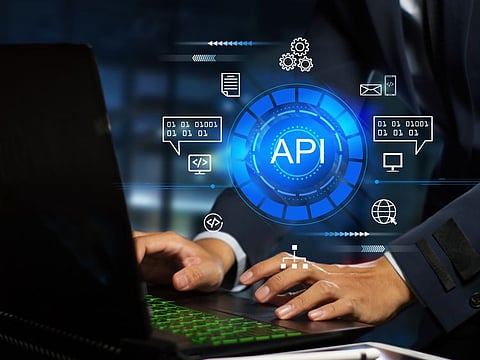Only question left on AI is how well can it be controlled
Everyone is on board the AI bandwagon, but it will require careful steering

Once the realm of sci-fi films and nihilistic novels, AI has firmly entered our everyday vernacular.
Whether it’s water cooler discussions over whether Chat-GPT is coming for your copywriting job, or the very real fear generated by Diary of a CEO’s interview with Mo Gawdat, former Chief Business Officer at Google – who claims that AI poses a bigger threat to the world than climate change.
While AI is not a new concept (the term ‘artificial intelligence’ came into usage in the 1950s), it has recently experienced a meteoric rise in terms of functionality and accessibility. AI is now open to anyone with access to the internet, bringing myriad possibilities - and pitfalls - to our fingertips.
According to a recent article in the ‘Harvard Gazette’, global business spending on AI services will top $50 billion this year and $110 billion in 2024.
Much that businesses can do
According to the PwC’s 2022 AI Business Survey, 86 per cent of CEOs view AI as an essential aspect of their operations, as leaders leverage ‘data, cloud and analytics for a bigger payoff’. Of the 1,000 respondents, the highest success lies with those businesses that are taking a holistic approach to AI integration.
Rather than focusing on one goal at a time, these AI leaders are implementing core competencies in three areas simultaneously - business transformation, enhanced decision-making, and modernised systems and processes.
These ‘AI leaders’ are twice as likely to report “substantial value from AI initiatives to improve productivity, decision-making, customer experience, product and service innovation and employee experience” than those businesses that are taking a piecemeal approach.
In the ‘Harvard Business Review’, Tsedal Neeley noted that AI technology is not simply a tool for making us work faster – it is a set of systems for collaboration that can identify patterns the human eye cannot see, providing data-based insights, analysis, predictions and suggestions.
If you start to view AI as a way to improve business from a bird’s eye view, you can begin to harness its full potential.
The accountability factor
OpenAI, Microsoft, and Nvidia have brought AI within reach of everyone - from students writing their term papers to top-tier organisations, but with this comes the entirely unchartered waters of ethics and accountability. And whether the robots really are coming for jobs.
Neeley cites large language models (LLMs) - such as OpenAI’s Chat-GPT or Microsoft’s Bing, which are “trained on massive datasets of books, webpages, and documents scraped from across the internet’. This opens AI up to unintentional bias, as it is trained on data sets that may not be representative of the global population. To avoid this developers are being called on to include more diversity in their data sets and in the make-up of their teams.
Only then can we ensure AI is truly for all.
Many AI algorithms are self-learning, constantly evolving and refining their output, which, when left unchecked, could lead to the perpetuation of bias, the spread of misinformation, privacy violations, security breaches, and even harm to the environment, Neeley notes.
Before sharing sensitive information with an AI programme, business owners should ensure privacy and end-to-end security are embedded into the design of the program. For those that are processing sensitive details, such as employee information, businesses should consider hiring a privacy expert for their team.
Always the human element
While there are some areas where AI far exceeds human capabilities, particularly in medical and tactical military fields where its precision and insight are light years ahead, in many instances, AI output is missing that much-desired human element. Whether it’s emotion and empathy in copywriting, originality in design, or personalised risk assessment in finance, AI can’t replace the individual nuances of the human workforce. Yet.
What next?
In terms of future-proofing the world from the potential pitfalls of AI, global players are recognising the need for a united front. The EU is drafting its Artificial Intelligence Act, which proposes three tiers of risk categories:
Globally, a collection of non-profits and research institutes such as the Partnership on Artificial Intelligence, the Institute for Human-Centered Artificial Intelligence, and the Responsible AI Initiative are establishing their own ethical standards.
While Elon Musk previously called for a pause in the creation of AI digital minds, along with Steve Wozniak, co-founder of Apple, and Emad Mostaque, who founded London-based Stability AI, he now feels that ship has sailed.
As the co-founder of OpenAI, Musk believes the way to avoid what he describes as a ‘Terminator future’ is to create an AI program that is at least as smart as humans. In announcing his super-intelligence programme xAI on Twitter in July, he said: ‘From an AI safety standpoint, a maximally curious AI, one that is trying to understand the universe, is I think going to be pro-humanity.’
The only thing that’s certain is that AI is here to stay – now we humans just need to stay in control.
Karl Escritt
The writer is CEO of Like Digital & Partners.
Sign up for the Daily Briefing
Get the latest news and updates straight to your inbox




